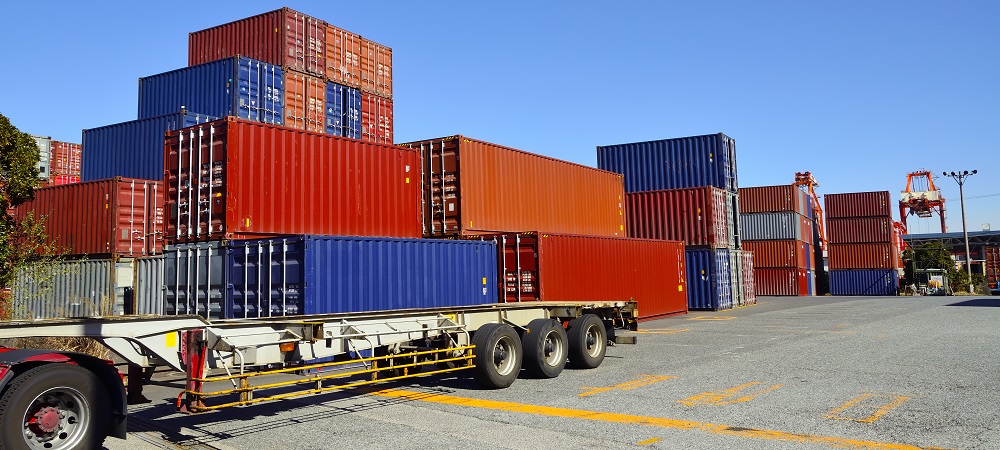Today, intermodal freight transport has become a popular topic in the entire transportation industry. Due to the several advantages of intermodal transportation, many companies have started using this freight transport option. It does save them not only time but also the bulk of investments on their product shipments.
In this article, we will discuss the must-know features of intermodal transportation. Furthermore, we’ll show you how it works and its benefits to your transport business.
How Does Intermodal Transport Work?
The benefits of intermodal transportation cut across the scope. Firstly, it can save companies money. Furthermore, the intermodal transportation method can also increase the safety and transit of a shipment. Plus, it can help in reducing a company’s environmental footprint.

One of the main advantages of intermodal transport is the absence of goods moving from one container to another. Thus, it lessens the contact of the product with air or germs. It also ensures total protection and security of the product. If you have international shipments to send out, this mode of transportation is ideal for you.
Typically, the first transport stage of this intermodal mode is road transport. In most cases, a truck or trailer is used to ship the items/goods to its first transfer point.
Generally, road transport is mostly adapted to shorter distances or for forwarding the goods to the train or the boat to be transported later. Afterwards, the entire container carrying the goods will be transferred to another transport mode, without changing the items’ container. Lastly, a final truck will transfer the goods/items from the unloading point to its destination point.
Features of Intermodal Transportation
There are many significant features of intermodal transport. Here’s what to expect when you hire intermodal shipping services in Canada:
- Fixed departure schedules.
- More reliable time-delivery notifications.
- Higher quality transport service standards.
- Less noise pollution and environmental footprint.
- Eliminate traffic and customs processes on the road.
- Leaner transport planning processes.
- Easier planning and support for large-scale shipping projects.

What are the Advantages of Intermodal Transportation?
If you’re wondering if the cost of intermodal shipping is worth it, here are some facts:
Lower Cost Alternative to Truckload
When shippers opt to drop trailers, they can take advantage of lower handling cost rates, more manageable pricing, and the flexibility of loading and unloading goods. If the freight lane has characteristics beneficial to intermodal, typically, there will be a 10% reduction in the cost of shipment.
Promotes Environmental Sustainability
When shippers use intermodal freight shipping, they significantly reduce their carbon footprint. Besides, trains only emit approximately 5.4 pounds of carbon can you buy valium online dioxide per 100 ton-miles. On the other hand, trucks emit carbon dioxide of about 19.8 pounds.
Moreover, one train can move an average of 280 trucks. An intermodal is four times more efficient than trucking while rail can move per 450 ton-miles on a single gallon of fuel.
Easy Data Monitoring and Collection
One of the newest advantages of intermodal transportation is easy data collection and monitoring. Before, it wasn’t easy to monitor, collect, and assess data shipment travelling via intermodal. Fortunately, due to a cloud-networked platform used by most intermodal shipping services in Toronto, these processes are now more efficient and effective.
Scalable and Flexible Logistical Operations
Most companies cannot effectively scale logistical operations in terms of varying demands annually. However, companies who utilize the advantages of intermodal shipping, are less likely to struggle with this issue.
A single train can move the load of 280 trucks. It translates to the equivalent of having an entire fleet at your transport disposal. Plus, a comprehensive rail network will make it easier to send shipments across the country.
Increased Level of Security and Protection
Since the shipment is transported on the railroad, your freight’s security and protection are guaranteed. The main reason is the train never stops, unless behind a secured intermodal ramp. Also, the container will be difficult to access while in a train car.
Time Efficient
Compared to the past, transit times and railroad shipping schedules have improved significantly. Two decades ago, moving goods outside Canada and the USA via intermodal shipping used to take two weeks. Currently, it only takes about seven to eight days. This is one of the advantages you stand to enjoy when you choose intermodal transportation.
Apart from that, intermodal moves smoothly from point A to point B. It has lesser distractions and delays from weigh stations, traffic patterns, and trucking issues.
Reliability and Capacity
Shippers have more access to equipment, as well as standardized transit schedules. Besides, when you move your freight via intermodal shipping, you have a wider opportunity to streamline your reverse logistics and capacity.

Final Thoughts
When seeking increased efficiency in your supply chain operations, intermodal shipping is the best choice. Because of the several advantages of Intermodal transportation, you’ll be able to meet your business’s needs. The ongoing development of intermodal infrastructure, along with continual improvements in technology, have improved freight efficiency.
If you want to experience the benefits of intermodal transportation, visit OCTi or call us at (905) 695 1501. You can also email us at dispatch@octi.ca.




